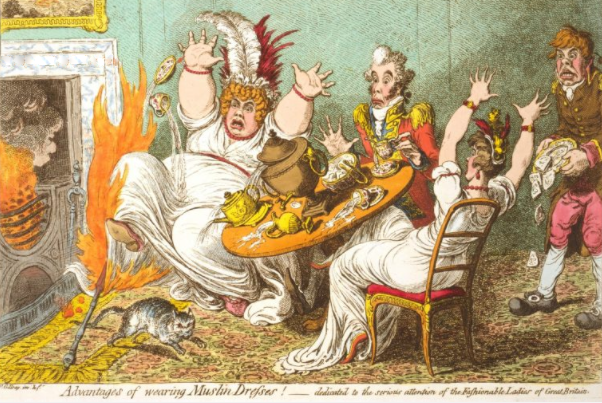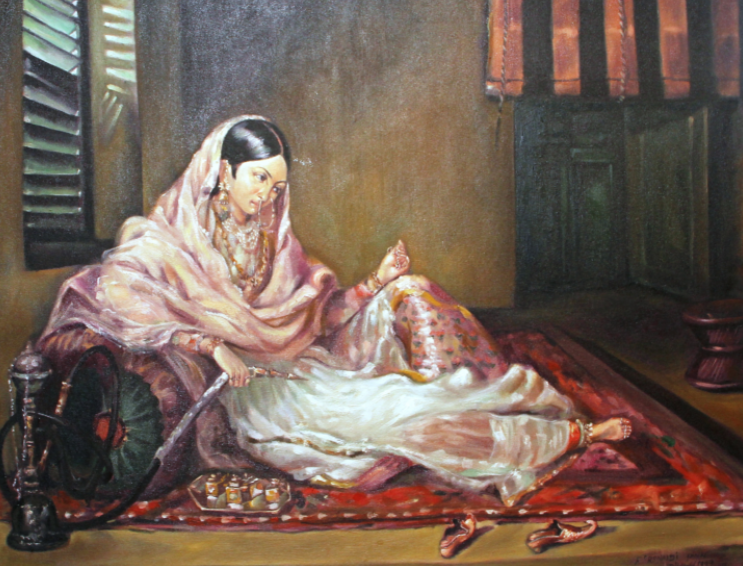Behind the existence of a nation lies the history and tradition of that nation. Dhakai muslin cloth is one of the few things that Bengalis used to be proud of in their history and tradition and still do. Recently, the news of the rebirth of Dhakai Muslin has given a new light of hope to the Bengalis. Speaking of Bangladesh’s heritage, there is no way to exclude muslin when it comes to history. Muslin is world famous for its fineness. The Mughal royal family of India preferred muslin cloth. Dhakai muslin was also the first choice of the British queens. But just as this famous product has a glorious age, it also has a tragic history of being lost in the womb of time.

The word muslin comes from ‘mosul’. The famous business center is Mosul. It is located in Iraq. Mosul also produced fine cloth. The English call it muslin because of its combination of muslin and fine cloth.
In the history of Bengal, muslin refers to a fine type of cloth produced in and around Dhaka at that time. This fine cloth was made from the cotton of the tree called Futi corpus. Muslin cotton was different from other varieties. And in the case of weaving muslin cloth, the environment was a very important regulator in every case of making yarn from cotton and weaving cloth with yarn. Humidity in cold and cold weather is quite suitable for cutting muslin yarn. As a result, the climate of temperate Bengal was quite conducive for weaving muslin cloth.

 muslin sharee
muslin shareeMuslin’s journey began 400 years ago today. Muslin produced in West Bengal of India including Bangladesh spread far and wide all over the world including China, America, Netherlands, Germany, Italy, Egypt, Europe. The Periplus of the Erythrian Sea contains special information about muslin. Muslin was in great demand among the Romans. The Romans introduced the first muslin cloth business in Europe and it gradually gained immense popularity. The subtlety of muslin is known from various historical events. History has it that if the dhakai muslin made during the Mughal period was placed on the grass and the dew fell on it, the cloth could not be seen. A few yards of muslin cloth could be blown away, so the people called it air cloth. Even a piece of cloth could be easily pulled out through a ring. This fine muslin could also be kept in a matchbox.

Many foreign tourists visiting Bengal have been fascinated by the technique of weaving muslin and the skill of cloth. The subtlety of muslin is described in a book entitled Silsilat-ut-Tawarikh, written by the Arab traveler and geographer Suleiman in the ninth century AD. In the mid-fourteenth century, Ibn Battuta and in the fifteenth century, the Chinese traveler Mahuan admired the muslin of Bengal with astonishment. Then in the sixteenth century Ralph Fitch, an English traveler, Duarte Barbosa, a Portuguese traveler, and Stavorinus, a Dutch traveler in the eighteenth century, observed the production of muslin in some special areas of Bangladesh and praised the fine and fine weaving of muslin. Apart from this, Robert Oram, the official historian of the English company, expressed his astonishment over the delicate, fine and visually pleasing weaving of muslin made in Bangladesh. Bains, the historian of the British corpus industry, was so puzzled by the muslin of Bengal that he was compelled to say that they were woven by an angel or an insect. This weaving is not possible by human beings. In fact, the description of the subtlety of muslin that has been woven into the pages of history from time to time does not seem real, it sounds like a fairy tale. But its real history is proved by the data of many historians of many countries.
Bengal’s muslin was self-sufficient in the past. Many geographical, social, economic and political regulators work behind the development, survival or destruction of an industry. Why the muslin industry developed in Bengal would be an exception. By defeating the Mughals, the British Baniyas realized before the conquest of Bengal that their only rival in the British saree was the muslin of Dhaka. That’s why they wanted to get rid of muslin forever. At first they imposed exorbitant tariffs on muslin cloth. The duty on cloth imported from Britain was 2-4%. But they levied 60-70% tax on local cloth including muslin. Therefore, as biliti cloth became cheaper in the country, at the same time, local cloth including muslin became expensive. So muslin could not survive in the competition. But muslin survived. This time the British rulers banned the production of muslin. Muslin production continued in defiance of their ban. Then the British invaded the muslin artisans. They began to cut off the fingers of muslin artisans so that they could not secretly make muslin or teach its construction techniques to others. And so one day the Bengalis lost the technology of making their proud muslin. For a long time after that the glorious history of Bengal muslin was buried in the dust. But under the direction of Prime Minister Sheikh Hasina, a research team undertook a project to bring back muslin cloth in 2014. Surprising everyone, the researchers have been able to bring back Dhaka muslin after 7 years of efforts. Truly in the new year it is a happy news for the nation.

